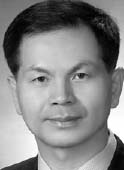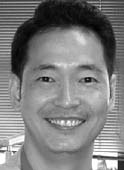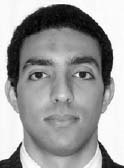THE EDITOR'S CORNER
Bone Augmentation Through Orthodontic Movement
One of the most interesting presentations I've ever observed at an orthodontic meeting was given by Dr. Bjorn Zachrisson, our longtime JCO Associate Editor, at the 2004 AAO annual session in Orlando, Florida. Always an excellent and exciting speaker, Dr. Zachrisson presented a series of cases that I would never have considered treating until then. Although adult orthodontic treatment had become pretty common well before that time, the cases shown by Dr. Zachrisson represented the first I had seen of geriatric orthodontics in practice. His patients ranged in age from 65 to 82 and represented all common forms of malocclusion, with the exception of surgical cases. Of course, every case had turned out beautifully and would have been admirable no matter what the patient's age, but the ones that interested me the most were the treatments undertaken specifically for the purpose of developing alveolar bone.
Similar articles from the archive:
One of the dictums we learn in orthodontic specialty training is that as a tooth is moved through bone, the bone ahead of the movement is removed by osteoclasts, while new bone is laid down by osteoblasts on the side of the tooth away from the movement. It is this osteoblastic activity that allows orthodontically moved teeth to "firm up" again after having been loosened to facilitate tooth movement. Dr. Zachrisson and others took advantage of that phenomenon to intentionally stimulate osteoblasts to lay down new bone in areas where bone had previously been lost due to either periodontal disease or trauma. JCO published a two-part interview summarizing Dr. Zachrisson's work in our April and May 2005 issues. The truly unique aspect of his approach was that bone could be developed not only vertically but horizontally as well. He presented cases demonstrating that an area of the alveolar ridge with significant bone loss, even after years of being edentulous, could be made suitable for implant placement by moving a tooth through it. As the tooth moved, bone followed. Considering how little had previously been published on the technique, our interview generated a great deal of interest from JCO readers. My enthusiasm for this "new" method was quite obvious, to the point that I ended up treating a number of cases for periodontists and prosthodontists in our large group practice. Twelve years later, I remain enthusiastic about the procedure and apply it whenever the situation calls for nonsurgical alveolar development.
Despite the impressive cases that Dr. Zachrisson presented and published, the technique still remains somewhat obscure for reasons that are unclear to me. Perhaps the added expense of orthodontic treatment on top of the costs of surgical and prosthodontic treatment makes the overall cost prohibitive. Perhaps the restorative team prefers the more rapid, but equally expensive, surgical augmentation of deficient alveolar ridges. Whatever the reason, we still have not seen many articles regarding orthodontic movement for the purpose of alveolar development. A quick PubMed search of the international orthodontic and implant literature shows that the movement of teeth horizontally through alveolar ridges that have been deemed unsuitable for implant placement, as was so elegantly demonstrated by Dr. Zachrisson, has had only one or two papers devoted to it. Vertical eruption - or "orthodontic forced eruption"(OFE) - has received more press as an older technique, but not much more. In fact, a systematic review of the literature on the subject, involving PubMed, Ovid Medline, Thomson's ISI Web of Science, Embase, and the Cochrane library, turned up only six articles that provided quantitative data on vertical bone augmentation through OFE. Drs. Mirinal Somar, Jhassu Mohadeb, and Cui Huang of Wuhan University, China, conducted that systematic review, and their results are presented in the current issue of JCO.
Besides the clinical applicability of the subject matter, another reason we are publishing this Overview is to demonstrate that a review of case reports, which are generally considered less reliable than randomized controlled studies, can provide useful information for the specialty. In this case, the authors validated clinical observations made over the years that OFE does indeed provide a valuable adjunct to interdisciplinary treatment. They specifically identified several prognostic factors for successful treatment while noting that "adverse events affecting the implant survival rate in those augmented sites were reported to be negligible". I trust this article will encourage further application of a valuable clinical technique, as well as more systematic reviews of the case literature.
RGK




